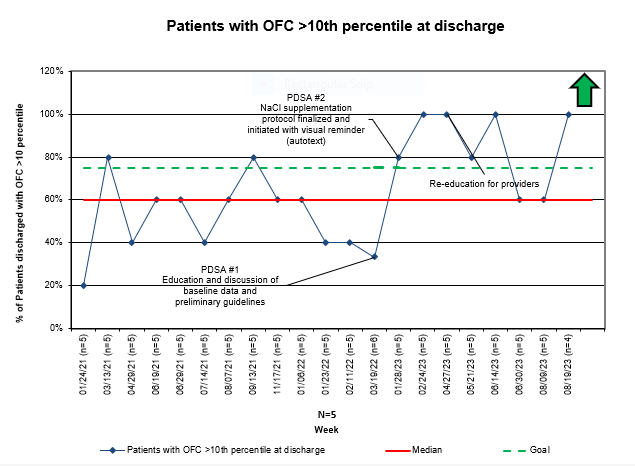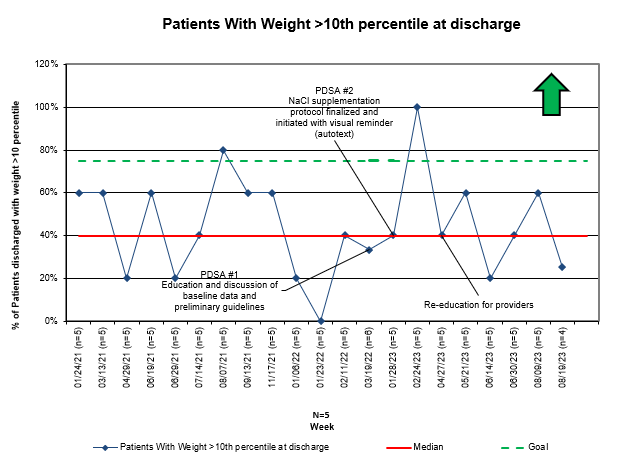Neonatology
Session: Neonatal Quality Improvement 6
88 - A Standardized Sodium Supplementation Protocol to Improve Growth Metrics in Very Low Birthweight Infants
Monday, May 6, 2024
9:30 AM - 11:30 AM ET
Poster Number: 88
Publication Number: 88.2851
Publication Number: 88.2851

Jennifer L. Hanford, IBCLC MSN NNP (she/her/hers)
Neonatal Nurse Practitioner
University of Missouri-Columbia School of Medicine
Columbia, Missouri, United States
Presenting Author(s)
Background: Preterm infants often struggle with weight gain, especially very low birth weight (VLBW) infants. Despite prompt administration of parenteral nutrition and early trophic feedings with a standardized feeding protocol, our VLBW infants continue to be discharged with growth metrics < 10th percentile. While many factors impact adequate growth, sodium is an essential mineral when targeting growth in this population. It is difficult to adequately assess total body sodium levels with serum and urine values, thus making it challenging to determine when to supplement and supplementation goals. Many of our VLBW infants received oral sodium inconsistently and only after a deceleration in growth was noted. Experts suggest infants receive sodium supplementation to reach a minimum intake of 2-7mEq/kg/day. This QI project was developed to introduce a standardized and prophylactic method of NaCl supplementation to improve growth metrics in the VLBW infant.
Objective: Improve growth metrics (weight and OFC) to >10th percentile at discharge in 75% of VLBW infants.
Design/Methods: Baseline chart reviews were completed from January 2021- March 2022 for VLBW infants. Infants were excluded if they were transferred to another hospital, readmitted, or died. In the spring of 2022, PDSA cycle one was initiated and included: reviewing the data, creating a SMART AIM and key driver diagram, and educating staff. Following this, the supplementation guideline was implemented as the second PDSA cycle. Post-implementation data was collected from January to September 2023. Demographic data was analyzed using the unpaired t-test while binomial variables were analyzed using the chi-squared test.
Results: Our pre and post implementation cohorts were similar in respect to gestational age, birthweight, length of stay, days on TPN, and co-morbidities. We saw a significant decline in the days to birth weight in our post intervention group, potentially related to less SGA babies. We also saw a significant increase in infants discharged with head circumference >10th percentile (p= .000649) and infants receiving NaCl supplementation (p= .033296).
Conclusion(s): While we were unable to demonstrate an ongoing increase in infant’s discharged with a weight >10th percentile, we are seeing some signs of improvement in discharging VLBW infants with OFC >10th percentile. More data needs to be collected to confirm this observation and the correlation to NaCl supplementation. This is an important finding as there is a positive correlation with achieving proper head growth and good neurodevelopmental outcomes for the preterm neonate.


.png)
